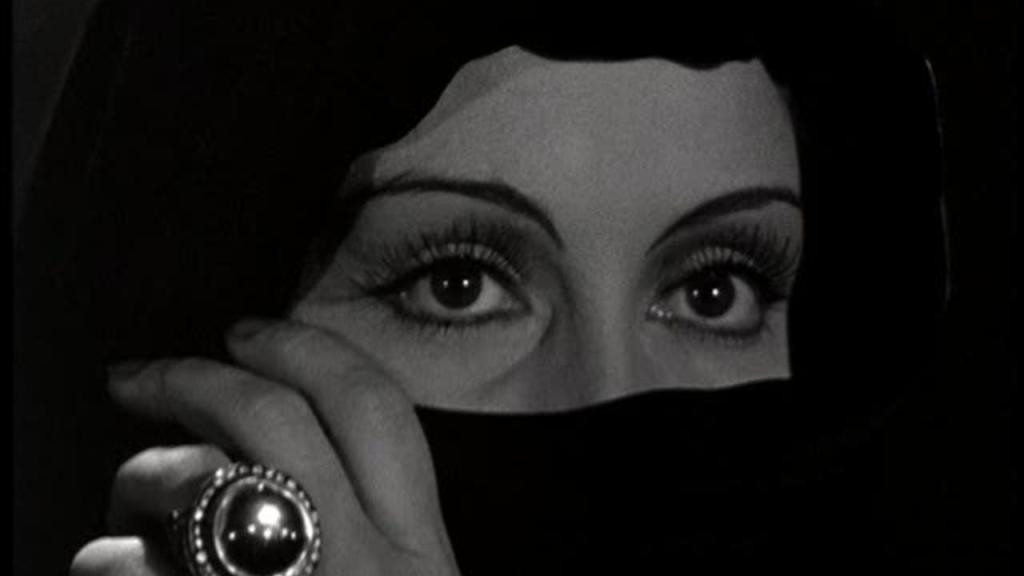I’ve set myself the challenge of watching all 28 films from Universal Studios’ golden age of horror that feature Count Dracula, Frankenstein’s Monster, the Mummy, the Invisible Man, the Wolf Man and the Creature from the Black Lagoon…
Spoiler warning: these reviews reveal minor plot points

The plot of this delayed sequel to the Bela Lugosi-starring Dracula is sometimes said to be based on Bram Stoker’s short story Dracula’s Guest. However, the resulting film shows precious little connection to this prose source, which may or may not have originally been a chapter of Stoker’s most famous novel. (Draculaologists have spent a century debating this point. It seems probable that Stoker cut out the section early in his seven-year writing process. His widow then published the ‘deleted scene’ as a self-contained short story after Bram’s death.) Whatever the provenance, Dracula’s Daughter stands as an enjoyable film in its own right.
Surprisingly, given how impressive the finished movie is, there was chaos during pre-production. Versions of the script were junked, numerous writers took stabs at new drafts, cast members were replaced, and directors were switched. James Whale – fresh off the success of Bride of Frankenstein – originally agreed to direct what would have been his fourth Universal horror, but then got distracted by more high-end projects. In the event, with the studio’s option on the Dracula rights running out, the gig was given to a journeyman called Lambert Hillyer. In the following decade, he would direct the first on-screen version of Batman (a 15-part cinema serial), but arguably Dracula’s Daughter has had a more lasting influence on popular culture.
Using a line of thinking that was later repeated by Hammer Films in the late 1950s, Universal figured that Count Dracula himself couldn’t appear in this sequel because he’d died in the first movie. (The notion of supernatural resurrection would come later.) But the vampire’s corpse does appear briefly as Van Helsing (a returning Edward Van Sloan) recaps the events of the 1931 film for the police. Rather oddly, other major characters such as Mina and John are neither seen nor mentioned. The focus then moves to a new lead…
First appearing with only her sad, expressive eyes visible above a scarf, the vampire Countess Marya Zaleska (Gloria Holden) is the previously unmentioned daughter of Count Dracula. She steals her father’s body and burns it, hoping that this ritual will release her from her own demonic curse. The plan fails, meaning she must continue feeding on innocent victims, but Zaleska still wants to change. So, aided by her lugubrious lackey Sandor (Irving Pichel), she seeks assistance from a psychiatrist. This offbeat twist for a mass-market horror flick actually has a historical resonance: Sigmund Freud was developing the concept of psychoanalysis at the same time that Bram Stoker was publishing Dracula, and many commentators have read Freudian implications in the novel. After all, Freud claimed that there are two dominating impulses behind human behaviour, which other psychoanalysts later dubbed Eros (the drive for life, love, sex, self-satisfaction) and Thanatos (aggression, destruction, violence, death). The entire vampire trope is built upon this combination of sex and death.

But the psychiatrist featured in Dracula’s Daughter is no stuffy, self-important Austrian who talks about cigars, anal fixations and the Oedipal complex. A personification of 1930s swagger and debonair detachment, Dr Jeffrey Garth (Otto Kruger) is seen first on a golfing holiday. We also meet his assistant, an American woman called Janet Blake (Marguerite Churchill), and together this flirty pair feel like they’ve been drafted in from a screwball comedy. The contrast shouldn’t work – a Gothic horror playing against a romcom – but it does. Brilliantly. Both sides of the story benefit from the charms of the other.
Shot more conventionally than Tod Browning’s original movie, Dracula’s Daughter is nevertheless a finer, more confident piece of filmmaking. An effectively creepy tone hangs over the Countess’s scenes, while secondary characters are well-cast, notably Nan Grey as a young woman targeted by Zaleska. Decorated by some effective incidental music and a few moments of humour, the story rolls along very enjoyably, and Zaleska – cinema’s first sympathetic vampire – is a fascinating character, bringing a huge amount of melancholia to the Universal series. (The actress thought the movie was tripe. You’d never know that from her soulful performance.) There’s also undoubtedly a sapphic subtext at play here, which was made explicit in a little-seen but fascinating quasi-remake called Nadja (1994).
Eight long shadows on the hillsides out of 10
Next: After the daughter of Dracula, meet the son of Frankenstein!
Previous review: I appraised this film as part of my Dracula blogging project in 2017.